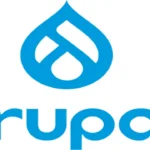-

Drupal
Drupal: Open Source CMS #2
History
Originally meant as a message board, Drupal was created by Dries Buytaert in 2001, and eventually the project picked up steam and a following in 2003. It gained even more traction after one of the candidates of the Democratic party in the US election, Howard Dean, used the CMS to build a website. By 2008, millions of downloads had already been registered. In 2017, it’s listed that 1.18 million websites use Drupal. The most recent version of Drupal is Version 10.0 released in December 2022.
Requirements
Requirements for Version 10 include:
– Web Server: Apache 2.4.7 or higher, Nginx 1.1 or higher, or any other web server with proper PHP support.
– Database: MySQL 5.7.8 or higher, MariaDB 10.3.7 or higher, Percona Server 5.7.8 or higher, PostgreSQL 12 or higher, SQLite 3.26 or higher.
– Memory: 1GB of RAM (unless you are using multiple modules or tools such of Solr, or memcache. Then more may be necessary), PHP memory requirements are a minimum of 64mb, or 128-256mb in production systems.
– PHP: Version 10 requires at least PHP 8.1, but 8.6 is strongly recommended. Required PHP extensions are: PDO, XML, GD-library, OpenSSL, JSON, cURL, and Mbstring.Hosted vs Self-Hosted
Like Joomla and WordPress, Drupal is self-hosted. Anything that meets the requirements above can successfully run Drupal.
Cost
As with the other open source CMS’s, Drupal itself is free, but various companies and sites provide hosting options for Drupal. Uniquely enough, they have a list of featured agencies on their site that allow for hosting of their CMS.
User Base
Currently, Drupal is used on 1.5% of all websites globally. This gives them ~2.4% of the market share between all CMS’s.
Filed Under: CMS, Interesting, Open-Source, Slider
Tags: Free, Open-Source
 Web CMD
Web CMD